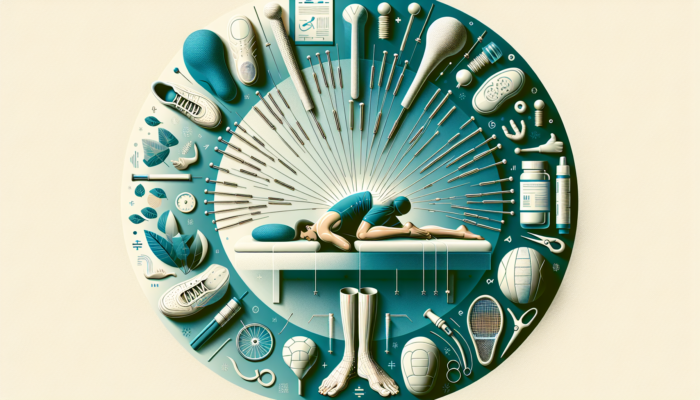Harness the Healing Benefits of Acupuncture for Effective Relief from Plantar Fasciitis
Understanding Plantar Fasciitis: Recognizing Key Symptoms and Root Causes

Plantar fasciitis stands as a prevalent yet troublesome ailment marked by inflammation and discomfort in the plantar fascia, a strong band of tissue that stretches across the bottom of the foot. This condition predominantly targets the heel and arch, leading to significant pain that can interfere with everyday activities and hinder movement. People experiencing plantar fasciitis frequently report intense, stabbing pain, especially noticeable during the first steps taken in the morning or after prolonged periods of sitting. Others may suffer from a persistent dull ache that intensifies during physical activities or after standing for extended periods.
The root causes behind plantar fasciitis are multifaceted and can involve various elements that exert undue stress on the plantar fascia. Key factors often encompass obesity, insufficient foot support, involvement in high-impact sports, or jobs that require prolonged standing. Additionally, the mechanics of the foot play a crucial role; individuals with flat feet or high arches are typically at a greater risk of developing this painful condition. Gaining a deeper understanding of these symptoms and causes is vital for recognizing how acupuncture for plantar fasciitis can effectively alleviate discomfort.
Diving into Acupuncture: Unpacking Its Mechanisms and Therapeutic Advantages
<a href="https://mcrtherapies.com/acupuncture-for-ibs-a-comprehensive-relief-guide/">Acupuncture</a> is a time-honored healing modality grounded in the principles of traditional Chinese medicine (TCM). This method involves the precise insertion of fine needles into designated points on the body to stimulate the flow of energy, known as Qi. The primary aim of this therapeutic approach is to restore balance within the body and activate its natural healing abilities. Recent scientific investigations have shown that acupuncture can prompt the release of endogenous opioids, the body’s natural pain-relieving substances, making it especially advantageous for individuals grappling with chronic pain conditions like plantar fasciitis.
From a clinical perspective, acupuncture has proven its ability to reduce inflammation and enhance blood circulation in areas affected by pain. Research suggests that stimulating specific acupuncture points can trigger the release of neurotransmitters and various biochemical agents that promote healing and diminish pain sensations. The application of acupuncture for plantar fasciitis harnesses these principles to effectively tackle the root causes of discomfort associated with this condition, facilitating recovery and restoring mobility.
Unveiling the Comprehensive Benefits of Acupuncture for Plantar Fasciitis Relief
The benefits of utilizing acupuncture for plantar fasciitis are extensive, offering a well-rounded treatment alternative. Numerous patients report significant pain alleviation after just a handful of sessions, enabling them to resume their daily activities with greater comfort and efficiency. Acupuncture not only mitigates pain but also addresses the underlying factors of the condition, ultimately fostering improved overall foot health.
One of the most compelling aspects of acupuncture is its non-invasive nature. Unlike surgical interventions or reliance on heavy medications, acupuncture provides a natural alternative that can seamlessly integrate into a holistic treatment plan. Furthermore, patients often experience fewer side effects compared to conventional medical treatments, making acupuncture a safer long-term option for managing symptoms.
Additionally, acupuncture enhances general well-being by relieving stress and encouraging relaxation—two critical components for those enduring chronic pain. As patients find relief from their symptoms, many report enhancements in mood and overall quality of life. Therefore, incorporating acupuncture for plantar fasciitis into treatment strategies can yield not only physical relief but also emotional and psychological benefits.
Expanding Your Knowledge of Acupuncture as a Treatment for Plantar Fasciitis

Key Acupoints for Targeted Treatment of Plantar Fasciitis
Identifying essential acupoints is crucial for maximizing the effectiveness of acupuncture for plantar fasciitis. Practitioners usually focus on specific points that correspond with the anatomy of the foot and lower leg. Noteworthy acupoints include the Kidney 3 (Taixi), situated near the ankle, recognized for its ability to nourish the kidneys and alleviate heel pain. Another important point is the Spleen 6 (Sanyinjiao), located just above the inner ankle bone, which is known for enhancing circulation and reducing inflammation.
Moreover, the Liver 3 (Taichong) is a crucial acupoint that can be activated to relieve tension and foster relaxation in the lower limbs. Effectively targeting these acupoints can significantly bolster the body’s natural healing processes, offering substantial relief from the discomfort linked to plantar fasciitis.
Acupuncturists may also utilize points located on the hands or ears, as these areas are believed to reflect overall body health and can aid in pain management. By understanding the connections between these acupoints and plantar fasciitis, practitioners can tailor treatment plans that cater to each patient’s unique requirements.
What to Expect During Your Acupuncture Session for Plantar Fasciitis
Understanding what to anticipate during an acupuncture session is vital for individuals contemplating acupuncture for plantar fasciitis. Upon arrival, the acupuncturist will carry out a detailed assessment, delving into your medical history and specific symptoms comprehensively. This individualized approach guarantees that the treatment plan effectively addresses your unique situation and concerns.
Once the treatment commences, patients typically lie comfortably while the practitioner inserts thin, sterile needles into predetermined acupoints. Most individuals report minimal discomfort during this process, often sensing only a slight prick or tingling sensation. The needles generally remain in place for approximately 20 to 30 minutes, during which patients are encouraged to relax and practice deep breathing techniques.
After the session concludes, many patients report feelings of relaxation and reduced pain. While some individuals may notice immediate relief, others might experience gradual improvements over time. Maintaining open communication with your acupuncturist throughout the treatment process is vital, as they can modify your treatment plan based on your progress and feedback.
Boosting Treatment Success: Combining Acupuncture with Other Therapeutic Approaches

Many practitioners advocate for a well-rounded approach to treating plantar fasciitis in order to achieve optimal outcomes. Merging acupuncture with supplementary therapies can significantly enhance overall treatment efficacy. For instance, physical therapy can complement acupuncture by providing specific exercises designed to strengthen foot muscles and enhance flexibility.
Furthermore, incorporating podiatric solutions such as custom orthotics can offer additional support and lessen the strain on the plantar fascia. These orthotic devices can assist in correcting foot mechanics and promoting even weight distribution, thus facilitating the healing process.
Moreover, implementing lifestyle changes, including maintaining a healthy weight and choosing appropriate footwear, can further amplify the advantages of acupuncture. Patients are encouraged to engage in low-impact activities, such as swimming or cycling, which support cardiovascular fitness without worsening foot pain. By adopting a holistic strategy that combines acupuncture with various therapies, patients can enhance their prospects of achieving lasting relief from plantar fasciitis.
Real-Life Success Stories: The Impact of Acupuncture on Plantar Fasciitis
Inspiring Patient Testimonials: Transformative Experiences with Acupuncture for Plantar Fasciitis
The transformative potential of acupuncture for plantar fasciitis is best exemplified through authentic success stories shared by patients. Numerous individuals have recounted their journeys, illustrating their transition from chronic pain to significant relief and emphasizing the profound effects of this ancient therapy. For example, Sarah, a passionate runner, suffered debilitating heel pain that substantially interrupted her training schedule. After undergoing several acupuncture sessions, she experienced a remarkable reduction in pain, allowing her to return to her love for running, attributing her recovery to her acupuncturist's expertise.
Another compelling story comes from Tom, who initially hesitated to explore acupuncture due to a fear of needles. However, after enduring persistent plantar fasciitis that rendered walking uncomfortable, he decided to give it a chance. To his surprise, he experienced minimal discomfort during the sessions and reported a notable decrease in pain levels within just a few weeks. His experience highlights the importance of being open to alternative therapies.
These testimonials underscore the effectiveness of acupuncture in managing plantar fasciitis symptoms. Patients frequently express gratitude for regaining their mobility and enhancing their quality of life, demonstrating how acupuncture for plantar fasciitis can lead to remarkable outcomes.
Setting Realistic Goals: Understanding the Timeline for Acupuncture Improvement
When embarking on an acupuncture journey for plantar fasciitis, it is critical to manage expectations concerning the timeline for improvement. While some patients may find relief after merely one or two sessions, others might require a more extensive treatment plan to achieve optimal results. Typically, practitioners recommend a series of sessions, usually ranging from 6 to 12 treatments, depending on the severity of the condition and the individual's response to therapy.
Patients should also understand that acupuncture is not a quick remedy but rather a holistic approach that demands patience and dedication. Various factors can influence the healing process, including the duration of symptoms, lifestyle choices, and adherence to complementary therapies. By maintaining realistic expectations and being consistent with treatment, patients can optimize their likelihood of experiencing significant improvements over time.
Additionally, regular follow-up sessions may be beneficial for monitoring progress and making necessary adjustments to the treatment plan. Open communication with the acupuncturist can help establish attainable goals and foster a collaborative approach to healing.
Navigating Initial Discomfort and Addressing Potential Side Effects
While many patients find acupuncture for plantar fasciitis to be a comfortable experience, some may encounter initial discomfort or mild side effects. It is essential to recognize that feeling some discomfort is a normal part of the process as the body responds to treatment. Some individuals may experience temporary soreness or bruising at the needle insertion sites, while others might feel a sense of fatigue or emotional release following the session.
Practitioners often recommend gentle stretching and rest after treatment to manage these initial reactions. Staying well-hydrated is crucial, as it helps flush out any toxins released during the session. Most importantly, patients should feel empowered to communicate any concerns with their acupuncturist, who can provide reassurance and guidance to ensure a positive experience.
While rare, some individuals may encounter more pronounced side effects, such as dizziness or fainting. If such instances occur, it is vital to inform the practitioner immediately. Understanding the potential for discomfort and equipping oneself with coping strategies can greatly enhance the acupuncture experience and contribute to a successful treatment journey.
Acupuncture for Plantar Fasciitis: Professional Insights and Perspectives
Expert Opinions: Insights from Acupuncturists Specializing in Plantar Fasciitis Treatment
Insights from acupuncturists who specialize in treating plantar fasciitis offer invaluable perspectives regarding the therapy's effectiveness. Many practitioners emphasize the necessity of a personalized approach, as each patient presents unique symptoms and underlying factors. In discussions, acupuncturists frequently highlight the importance of blending traditional techniques with contemporary knowledge of anatomy and physiology.
For instance, one acupuncturist noted their practice of performing a comprehensive assessment of a patient's gait and posture to inform their treatment strategies. This thorough evaluation enables them to identify specific areas of tension and pain, ensuring that acupuncture sessions are both focused and effective. They also stress the importance of patient education, motivating individuals to implement lifestyle changes that can complement acupuncture therapy.
Moreover, numerous acupuncturists report high success rates among patients managing plantar fasciitis, attributing this to the therapy's capacity to address both the physical and emotional dimensions of pain. By fostering a supportive and empathetic environment, practitioners can help patients feel more comfortable, ultimately enhancing the overall treatment experience.
The Integral Role of Acupuncture in Comprehensive Foot Health Management
Acupuncture plays a crucial role in promoting holistic foot health, particularly for chronic conditions such as plantar fasciitis. By addressing the underlying causes of pain and discomfort, acupuncture not only alleviates symptoms but also supports overall well-being. Practitioners often advocate for a comprehensive strategy that integrates acupuncture, nutrition, exercise, and lifestyle modifications.
Incorporating acupuncture into a broader health strategy can improve foot biomechanics and functionality. For example, combining strengthening exercises with acupuncture can help restore balance and flexibility in the feet, thereby reducing the likelihood of future injuries. Acupuncturists may also suggest dietary changes that support tissue health and decrease inflammation, further amplifying the benefits of acupuncture for plantar fasciitis.
Ultimately, integrating acupuncture into a holistic approach to foot health encourages patients to take an active role in their healing journey. By viewing foot health through a multifaceted lens, individuals can cultivate lasting improvements beyond the treatment room.
Current Trends and Research in Acupuncture Therapy
As interest in acupuncture continues to grow, ongoing research is essential for validating its effectiveness in treating conditions like plantar fasciitis. Recent studies have explored the physiological mechanisms behind acupuncture's pain-relieving effects, illuminating its potential as a supplementary therapy in pain management. Researchers are also examining the optimal number of sessions and specific acupoints to maximize results for patients experiencing plantar fasciitis.
Future trends in acupuncture therapy may involve the incorporation of advanced technologies, such as electro-acupuncture and infrared therapy, to enhance treatment outcomes. These innovations could provide additional stimulation and lead to quicker recovery times for patients. Moreover, as healthcare systems increasingly acknowledge the role of alternative therapies, acupuncture may become more widely available as part of comprehensive care plans.
In summary, the future of acupuncture for plantar fasciitis looks promising, with ongoing research paving the way for more effective treatment protocols and greater acceptance within the medical community. As practitioners refine their techniques and approaches, patients can look forward to even more innovative and effective methods for managing this challenging condition.
Acupuncture for Plantar Fasciitis: Essential Tips for Achieving Optimal Results
Preparing for Your First Acupuncture Appointment: A Comprehensive Guide
Thorough preparation for your initial acupuncture appointment is essential for ensuring a positive and effective experience. Start by researching qualified practitioners who specialize in acupuncture for plantar fasciitis. Seek out reviews and testimonials that provide insights into their expertise and therapeutic approaches. It’s also wise to verify their credentials and confirm that they are licensed and experienced in treating foot-related issues.
Before your appointment, compile a comprehensive list of your symptoms, medical history, and any medications you are currently taking. This information will empower the acupuncturist to customize the treatment to your individual needs. It’s advisable to wear loose, comfortable clothing that allows easy access to the treatment areas and ensure you arrive well-hydrated.
Additionally, consider bringing a journal to document your experiences, including any changes in symptoms or overall well-being following treatment. This record can be invaluable for both you and your acupuncturist in tracking progress and making necessary adjustments to your treatment plan.
Maximizing Recovery: At-Home Care and Exercises to Complement Acupuncture
Integrating at-home care and exercises is vital to optimize the benefits of acupuncture for plantar fasciitis. Simple stretching and strengthening exercises can significantly improve flexibility and support healing. For instance, calf stretches and toe curls can help alleviate tension in the plantar fascia and enhance overall foot function.
Applying ice to the affected area can effectively reduce inflammation and relieve pain after exercising. Patients should also consider using a foam roller or massage ball to release tight muscles in the feet and calves, promoting better blood circulation and relaxation.
Maintaining good foot hygiene is equally significant. Keeping your feet clean and moisturized can prevent skin irritations and sustain overall foot health. Additionally, opting for supportive footwear that offers adequate arch support and cushioning can greatly improve symptoms and prevent recurrence.
By incorporating these at-home strategies alongside acupuncture treatments, patients can foster a more thorough healing process and enhance their overall foot health.
Post-Acupuncture Care: Strategies for Sustaining Optimal Foot Health
After starting your regimen with acupuncture for plantar fasciitis, it is crucial to prioritize foot health to avert future issues. Continue practicing the exercises recommended by your acupuncturist, focusing on strengthening and stretching the muscles in your feet and calves. Consistency is essential for ensuring lasting results and minimizing the risk of re-injury.
Moreover, pay close attention to your footwear choices. Select shoes that provide adequate support, cushioning, and stability. Avoid high heels or excessively flat shoes, as these can exacerbate foot pain and impose additional strain on the plantar fascia. Custom orthotics may also be advantageous, particularly for individuals with specific foot mechanics or conditions.
Regularly reevaluate your activity levels and remain attentive to changes in your body. If you notice a return of symptoms, consult your acupuncturist for further guidance. Integrating foot care practices, such as soaking your feet and using appropriate topical treatments, can contribute to overall foot health and well-being.
By prioritizing foot health post-treatment, patients can enjoy a more active lifestyle and decrease the likelihood of developing chronic conditions like plantar fasciitis.
Acupuncture for Plantar Fasciitis: Addressing Frequently Asked Questions
Is Acupuncture Painful for Treating Plantar Fasciitis?
Most patients report experiencing minimal discomfort during acupuncture, often describing it as a slight prick or tingling sensation. The needles are extremely thin, and many individuals find the overall experience to be more soothing than painful.
How Many Acupuncture Sessions Are Generally Required for Relief?
While some patients may find relief after just 1-2 sessions, a typical treatment plan usually consists of 6-12 sessions, depending on individual symptoms and their response to treatment. Consistency is crucial for achieving optimal results.
Can Acupuncture Help Prevent Plantar Fasciitis from Recurring?
While acupuncture can significantly relieve symptoms and promote healing, ongoing self-care, including wearing suitable footwear and engaging in regular stretching, is essential for preventing recurrence. Regular follow-up sessions may also assist in maintaining foot health.
What Can I Expect After My Initial Acupuncture Session?
Following your first acupuncture session, you may experience relaxation and diminished pain levels. Some individuals note temporary soreness or fatigue, but these sensations typically subside quickly.
Are There Any Side Effects Linked to Acupuncture?
Most side effects, such as soreness at the needle insertion sites or mild fatigue, are temporary and minor. Serious side effects are rare, but it is important to discuss any concerns with your acupuncturist.
Can I Continue Other Treatments Alongside Acupuncture?
Yes, many patients find that combining acupuncture for plantar fasciitis with other therapies, such as physical therapy or massage, can enhance overall results and facilitate recovery.
Do Insurance Providers Cover Acupuncture Treatments?
Coverage for acupuncture varies by insurance provider. It is advisable to check with your insurance company to determine if treatments for plantar fasciitis are included in your policy.
How Long Does Each Acupuncture Session Typically Last?
Each acupuncture session generally lasts between 30 to 60 minutes, encompassing both assessment and treatment time. The duration may vary based on individual needs and treatment protocols.
Can Acupuncture Be Utilized for Other Foot Conditions?
Absolutely! Acupuncture can be effective for various foot conditions, including bunions, heel spurs, and general foot pain. Consult your acupuncturist for tailored treatment options.
What Lifestyle Changes Can Support the Effectiveness of Acupuncture Treatment?
Incorporating regular stretching, maintaining a healthy weight, wearing supportive footwear, and participating in low-impact exercises can significantly enhance the effectiveness of acupuncture for plantar fasciitis while promoting overall foot health.
Connect with us on Facebook!
Presented By: Plantar Fasciitis Therapy
The Article: Acupuncture for Plantar Fasciitis: Symptoms and Root Causes appeared first on https://mcrtherapies.co.uk
The Article Plantar Fasciitis: Understanding Symptoms and Causes of Acupuncture appeared first on https://mcrtherapies.com
The Article Plantar Fasciitis: Explore Acupuncture’s Role in Symptoms and Causes Was Found On https://limitsofstrategy.com


I really appreciate how you’ve highlighted the complexities surrounding plantar fasciitis. Having dealt with it myself, I can definitely relate to those first painful steps in the morning. It’s frustrating how something so seemingly small can have such a profound impact on daily life.
I hear you. Those first steps in the morning can feel like a marathon. It’s remarkable how something that seems so minor on the surface can shadow your whole day. It highlights how much we rely on our feet without even thinking about it. Have you tried any specific stretches or changes in your routine that have helped? Sometimes the smallest adjustments can bring a bit of relief. Sharing our experiences can really help others navigate through similar struggles.
It’s interesting how our bodies can respond to daily challenges in unexpected ways. Those first painful steps in the morning often serve as a reminder of how much we take for granted. Plantar fasciitis really does highlight the complexities of how something that seems small can resonate so deeply in our everyday lives.
You’re so right about how our bodies can surprise us with their responses. I think the little things, like those first painful steps in the morning, often have a way of pulling us into the present moment. It’s interesting how something as seemingly minor as plantar fasciitis can really shift our perspective on movement and wellness.
You bring up such a profound point about how our bodies can surprise us. It’s fascinating how something like those first painful steps in the morning can captivate our attention and remind us of the present moment. I’ve found that when I experience discomfort, it often forces me to reevaluate not just how I move, but also how I approach my daily routines.
You captured that beautifully. It’s remarkable how our bodies make us aware of our presence through those small, often painful reminders. Those first few steps can feel monumental, can’t they? It’s as if we’re forced to reflect on each movement, the way we take them for granted until something like plantar fasciitis calls us out.
You bring up a really important point about how our bodies react to daily challenges. Those first painful steps in the morning can feel like a shock, and it’s such a stark reminder of how easily we take our mobility for granted. It’s interesting to think about how an issue like plantar fasciitis, often dismissed as just a nuisance, can alter the way we engage with the world around us.
Absolutely! It’s fascinating how our bodies communicate through pain. If you’re looking to better understand and manage conditions like plantar fasciitis, check out this resource that offers valuable insights and tips.
https://greatyorkscomp.co.uk/krystal
It’s really great to hear that my article resonated with your experience. Those first steps in the morning can feel like a reality check, can’t they? It’s interesting to think about how something that might seem like a minor annoyance can ripple out into so many areas of daily life. You end up modifying how you walk, how active you are, and even what you wear, all because of that nagging pain.
It really is fascinating how those little morning moments can set the tone for the rest of the day. It’s almost like a domino effect, isn’t it? I’ve found that when I wake up feeling discomfort, my mindset shifts too. You start thinking twice about every step and even what you might enjoy doing later on.